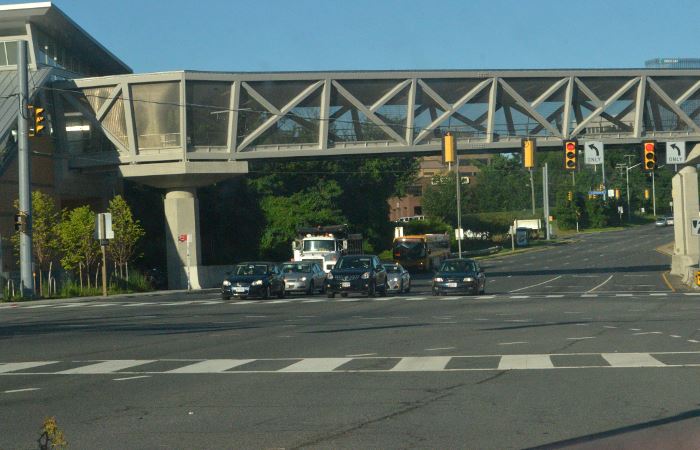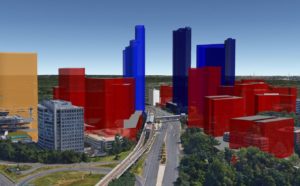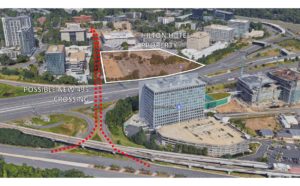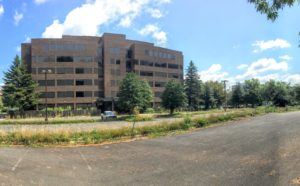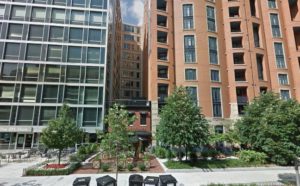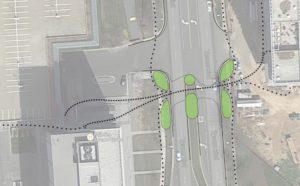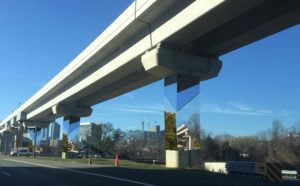What are superblocks? If you aren’t typically drawn to urban planning discussions you may have never heard this word before, despite being able to know it when you see it. A superblock is just as it sounds, a city block on steroids.
Prior to the automobile age there was a striking similarity to how cities were laid out, dating back to basic dimensions set by the Romans. In general city blocks were arranged in units of 200 feet; creating one acre tracts, establishing a road grid, and create a vocabulary of main thoroughfares (400 foot divisions) and secondary thoroughfares (200 foot divisions). Cities dating back centuries like London show this common grid as do younger cities which began before the car such as Chicago or New York.
A superblock occurs when these dimensions become completely out of whack, for instance several cases of multi-thousand foot superblocks found in Tysons. So, what is the problem with superblocks? After all, fewer intersections means fewer red lights and less traffic right?
The concept of limited access works well in transportation theory and modeling of highways, but when you design cities in this manner we have found time after time that traffic instead of moving at speed without red lights, comes to a standstill due to the funnel affect of forcing everyone to singular constraining points. The lack of a grid means a lack of secondary options, which results in complete failure when anything goes wrong on the single option available.
Superblocks also are designed around 35+ mph travel modes. Massive blocks destroy a neighborhoods walkability, forcing people to walk around obstructing parcels where distances might be very short as the crow flies. Lastly, superblock design, due to the funneling of all traffic to these single locations, creates over-sized roads. Instead of having two parallel roads of four lanes each we end up with one road with eight lanes, which affects aesthetics and marketability of neighborhoods in addition to walkability.
FCDOT, and the Tysons community as a whole, has admitted long ago that it has a serious superblock problem. One of the main focal points of the Tysons Comprehensive Plan approved in 2010 is how to transition superblocks into an urban road grid network.
So with that in mind we are beginning a new series called Superblock Remediation. We will look at each neighborhood, one at a time, to see what road and pedestrian links can be added immediately (no impacts to existing buildings) and which might take redevelopment or major changes to implement in the future.
Our first case is a massive superblock of aging office buildings (one of which has already been torn down for redevelopment) along the corner of Westpark Drive and Jones Branch Drive. This superblock is both within walking distance of Tysons Corner metro station, and McLean Metro Station (once the Jones Branch Connector is completed).
Using the existing parking lots and road entrances and removing the arbitrary fencing and barriers between each parcel can significantly improve the road layout. The only barrier occurs at the large arc of Jones Branch Drive, where the position of the current office building conflicts with the logical road grid link, shown in red. Additional pedestrian oriented links can be created via sidewalks or trails as shown as blue circles. At the center of previous superblock, now neighborhood, could be a public park to resolve the geometry created from the arc of Jones Branch Drive.
What is currently eight mid-rise buildings haphazardly located could become 16 or more city blocks capable of supporting thousands of residents and jobs. It also creates the possibility for a future connect through the Dulles Toll Road created by the newly bisecting road which could act to reduce congestion from the future Jones Branch Connector and existing Westpark Drive.

